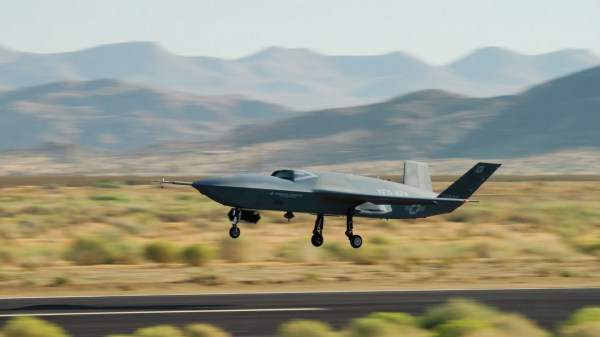GAO warns that Air Force’s hypersonic cruise missile program is behind schedule

Delays in finalizing design for the Air Force’s Hypersonic Attack Cruise Missile (HACM) have put the program behind schedule, limiting the number of flight tests the service can conduct before it declares the weapon operational, according to a new report from the U.S. government’s watchdog organization.
Air Force officials overseeing HACM told the Government Accountability Office that the program’s first design review was held in September 2024 — six months later than expected — because more time was needed to nail down the missile’s hardware design. As a result, the service will only have time to conduct five flight tests for HACM before it begins rapid fielding efforts in fiscal 2027.
“Program officials said that the delays will reduce the number of flight tests the program can conduct during the 5-year rapid prototyping effort from seven to five,” GAO said in its annual assessment of the Pentagon’s acquisition programs, published Wednesday. “These officials said that the program will still be able to establish sufficient confidence in the missile to declare it operational and to meet all the [middle tier of acquisition pathway’s] objectives with the reduced number of tests.”
Led by RTX subsidiary Raytheon, HACM is an air-breathing scramjet missile and one of the Air Force’s two main efforts to develop hypersonic weapons, which can fly at speeds of at least Mach 5 and are highly maneuverable mid-flight. Northrop Grumman is also on the program as a subcontractor that’s developing the scramjet engine.
Raytheon received a $985 million deal from the Air Force in 2022 to develop HACM under a middle tier of acquisition (MTA) contract, an alternative procurement pathway that requires systems to complete a rapid prototyping effort within five years. The company was later given a $407 million award in 2023 for additional work to enhance the HACM’s capabilities — bringing the contract’s total value to nearly $1.4 billion.
According to its budget request for fiscal 2025, the Air Force planned to mature HACM’s design and initiate flight test activities — including integration on the F-15E Strike Eagle and F/A-18E/F Super Hornet, as well as all-up-round free flight testing of missile prototypes. The service intended to build 13 missiles during the rapid prototyping effort to use as “test assets, spares, and rounds for initial operational capability,” the GAO report noted.
Program officials told GAO that HACM’s first design review was delayed to allow for more time to finalize the missile’s hardware design and “validate an initial configuration of the system for use in the first flight test,” the report stated. Another review to certify the system’s “fully operational configuration for use in the final flight tests” was scheduled for sometime in 2025.
An Air Force spokesperson declined to comment on the current status of HACM’s development, citing “enhanced program security measures.” Raytheon did not respond to DefenseScoop’s request for comment.
Furthermore, GAO said that Raytheon is now “projecting that it will significantly exceed its cost baseline” for HACM, although Air Force officials told the watchdog that removing two flight tests could offer some savings. The program’s development cost as of January 2025 was estimated at close to $2 billion — a two percent increase from the watchdog’s 2024 assessment of $1.9 billion, according to the new report.
HACM would not be the Air Force’s first hypersonic missile to face challenges during development. Its other program — the Lockheed Martin-developed AGM-183A Air-Launched Rapid Response Weapon (ARRW) — had a rocky test campaign. At least one of the weapon’s flight tests was deemed unsuccessful, prompting the service to shift priority to HACM’s development.
Issues during ARRW’s testing led the service to axe the weapon’s procurement in FY’25 so the Air Force could reassess the program for future budget requests, casting doubt on ARRW’s future. However, Air Force Chief of Staff Gen. David Allvin recently revealed that the service has included funds to buy ARRW missiles in its upcoming fiscal 2026 budget request.
“I will tell you that we are developing — and you’ll see in the budget submission, assuming it’s what we put forward — two different programs. One is a larger form factor that is more strategic [and] long range that we have already tested several times — it’s called ARRW. The other is HACM,” Allvin said last week during a House Armed Services Committee hearing.
Although both ARRW and HACM are hypersonic weapons, they each have different propulsion systems that give them different characteristics. ARRW is a large boost-glide missile that uses a rocket motor to achieve hypersonic flight and is thus limited to being carried by bigger platforms, such as the B-52 Stratofortress bomber. On the other hand, HACM is a smaller cruise missile powered by an air-breathing jet engines, or scramjet, meaning it can be launched from more tactical aircraft like fighter jets.
Despite their differences, Air Force officials have previously stated that both ARRW and HACM are “complementary” to one another.
Moving forward, the Air Force is working with Raytheon to create a new schedule for HACM that still follows the five-year rapid prototyping timeframe mandated for MTA programs, GAO noted in the report. The government watchdog also said the Air Force has altered HACM’s transition strategy to support faster delivery of more missiles, while also improving the weapon’s design for large-scale manufacturing and expanding the industrial base’s capacity for production.
The service currently plans to use the rapid fielding effort in FY’27 to deliver missiles developed during HACM’s initial prototyping phase and then iterate on the weapon’s design. That work will inform a concurrent major capability acquisition pathway program the Air Force will start production for in fiscal 2029, according to GAO.
“The program office stated that based on global power competition and urgency to address threats, the Air Force changed the focus of the HACM program from a prototype demonstration to a program that would deliver operational capability in fiscal year 2027,” per the report. “The program stated that, with this shift, it is focused on meeting schedule as the priority and maintaining velocity toward fielding an operationally relevant capability — the minimum viable product that meets user-defined performance requirements — in fiscal year 2027.”






